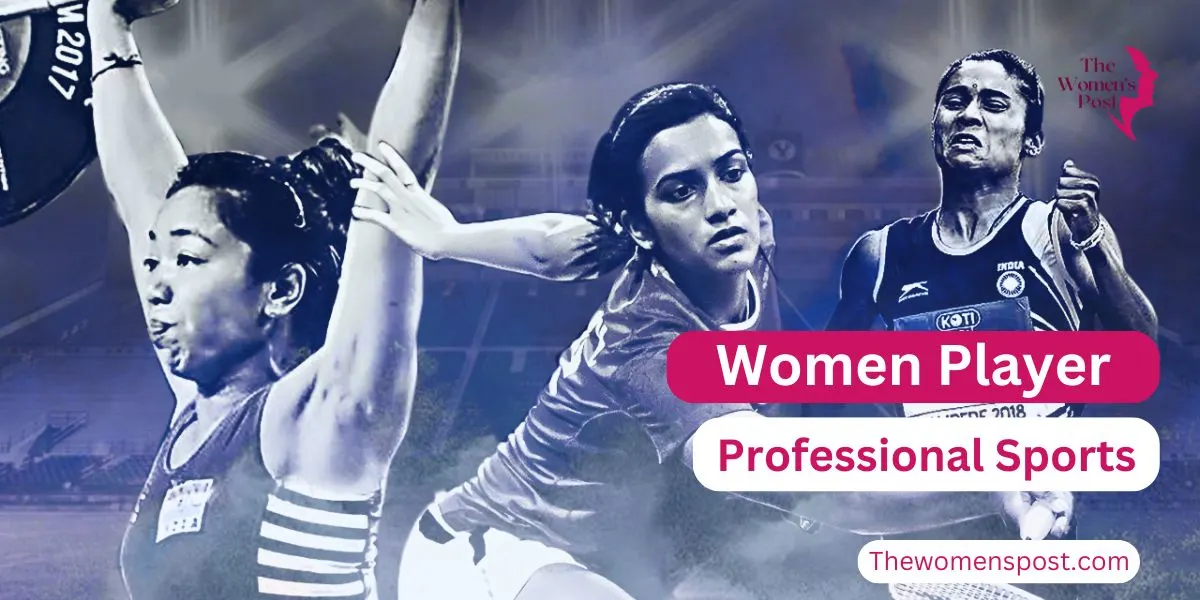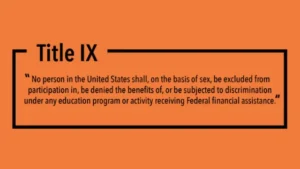Introduction
People have always used sports to show how strong, skilled, and passionate they are. But for a long time, women in sports weren’t allowed to be in this world. People told them they couldn’t play because it wasn’t “proper” or because they thought they weren’t strong enough.
Women in sports have fought hard over the years to break down gender barriers in professional sports and make history in professional athletics. This article talks about the history of women in professional sports, from small beginnings to the world stage. It also talks about the women who were the first to make it possible for women to play professional sports.
The Beginning: Few Chances
Societal Restrictions in the 1800s
Women in sports had to follow strict rules in the 1800s. People thought that sports were too hard for women and could hurt their health or make them less “feminine.” Women were told to stay home, take care of their families, and not do any physical activities. But some women in sports didn’t follow these rules, which helped them get through the early problems that women in professional sports have faced in the past.
Early Sports Activities
- They began to play sports like tennis, croquet, and archery in small groups, usually in private places.
- People thought these activities were okay because they weren’t too competitive and let women wear fancy clothes that made them look “ladylike.”
Emergence of Athletic Clubs
Things started to change in the late 1800s, which was a key moment in the history of women playing professional sports.
Growth of Women’s Sports Clubs
- Women in cities all over the United States, from New York to New Orleans, started sports clubs.
- Women who liked sports could play sports like bowling and tennis at these clubs.
Introduction of Basketball
- Smith College started playing basketball in 1892, and it quickly became popular with college women.
- The first women’s basketball games between colleges took place in 1896. Teams from schools like Stanford and the University of California, Berkeley competed. This helped women get involved in professional sports.
The Early 1900s: Small Wins, Big Pushback
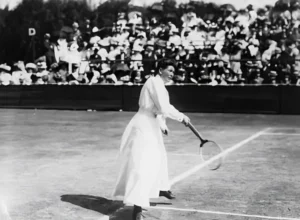
Also Read: Simone Biles: The All Time Greatest Gymnast
Olympic Participation
Women had more chances to play sports in the early 1900s, but there were still a lot of problems for women in professional sports history.
Women in the Olympics
- For the first time in 1900, women were allowed to compete in the Olympics. They could do things like tennis, sailing, and croquet.
- Charlotte Cooper, a British tennis player, was the first woman to win an individual Olympic gold medal. This was a big step forward for women in professional sports.
Societal Resistance
- But even after these changes, a lot of people still thought women shouldn’t compete in sports.
- Some people thought that women who ran long distances or played hard sports would get sick or not be able to have kids.
Organizational Support
The Women’s Division-National Amateur Athletic Federation (NAAF) was set up in the 1920s to help colleges organize women’s sports. This was a big step forward for women in professional sports because it made it easier for women to compete in a more formal way.
Impact of the 19th Amendment
- The 19th Amendment, which gave women the right to vote, also changed how people thought about what women could do in sports. This helped women get into professional sports even more.
World War II Breakthrough
During World War II, there was one of the biggest breakthroughs.
All-American Girls Professional Baseball League
- While a lot of men were away fighting, women in sports kept sports going.
- The All-American Girls Professional Baseball League was started in 1943, and it was the first time women could play professional sports.
- This league proved to the world that women could compete at a high level and draw big crowds. It was a big step forward for women in professional sports.
The 1950s and 1960s: More and More People Are Supporting
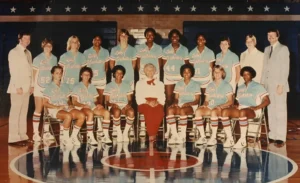
Also Read: Serena Williams: Redefining Tennis and Beyond with Power, Passion, and Purpose
Growing Acceptance
In the 1950s and 1960s, women’s sports were becoming more popular, even though women in professional sports history still had to deal with a lot of problems.
Policy Changes
- The Division for Girls and Women’s Sports (DGWS) changed its rules in 1957 so that women could play sports with other colleges.
- By 1963, they had gone even further, saying that these programs were not only okay but also “desirable.” People used to think very differently about women in sports.
Organizational Developments
Establishment of CISW and CIAW
- The Commission on Intercollegiate Sports for Women (CISW) was set up in 1966 to help organize college sports for women.
- In 1967, it was given the new name Commission on Intercollegiate Athletics for Women (CIAW).
National Championships
- In 1969, it was announced that women would have national championships in sports like gymnastics and track and field.
Formation of AIAW
- The Association for Intercollegiate Athletics for Women (AIAW) was founded in 1971 and had more than 800 schools by 1981.
- These changes gave women in sports more chances to compete and be recognized, which helped break down gender barriers in professional sports even more.
Title IX Changes Everything in the 1970s
Also Read: Marie Kondo: Mindful Living and Transformational Home Organization
Introduction of Title IX
Title IX changed things for women in sports in the 1970s.
Legal Framework
- Title IX, which was passed in 1972, said that schools and colleges that got money from the federal government could not treat people differently because of their sex.
- This meant that women had to have the same chances in sports as men, which was a big step toward breaking down gender barriers in professional sports.
Pre-Title IX Challenges
- Before Title IX, women’s sports programs often had less money, fewer coaches, and worse facilities than men’s sports programs.
- Title IX changed that by making sure everyone was treated the same.
Impact of Title IX
The effect was huge.
Increased Participation
- By the end of the 1970s, there were more than twice as many girls playing high school sports as there had been before.
- Colleges began to offer more sports for women, and female athletes received more help, such as scholarships and coaching.
Pathway to Professional Leagues
- Title IX made it possible for more women to play professional sports, from school teams to professional leagues.
People Who Broke Down Barriers
Some women didn’t just play sports; they changed the way the game was played. Here are two of them:
Babe Didrikson Zaharias
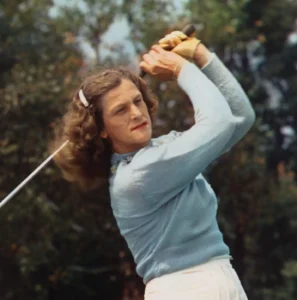
Personal Background
- Age at Important Accomplishments: Won medals at the Olympics when he was 21 (1932) and died when he was 45 (1956).
- Where She Fit In: Born in Port Arthur, Texas, and moved to Beaumont, Texas, when he was four. He later lived in Denver and Tampa.
- Learning: She went to Beaumont High School but dropped out in her senior year to play semiprofessional basketball for Employer’s Casualty Insurance Company in Dallas.
Also Read: Sacred Rage: Reclaiming Women’s Anger as a Force for Healing
Achievements
- Babe Didrikson Zaharias was a star in many sports.
- She was born in 1911 and got the nickname “Babe” after hitting five home runs in a baseball game when she was a kid.
- She won two gold medals (in javelin and hurdles) and one silver medal (in high jump) at the 1932 Olympics.
- Later, she took up golf and won 82 tournaments.
- She also helped start the Ladies Professional Golf Association (LPGA).
- The Associated Press named her “Woman Athlete of the Half-Century” in 1950.
- Even though she had colon cancer, she kept competing until she died in 1956.
- This solidified her legacy as a pioneer for women in professional sports.
Billie Jean King
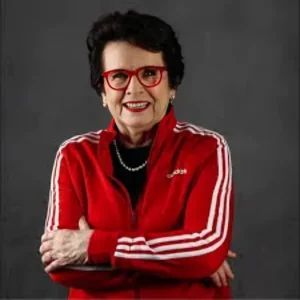 Personal Background
Personal Background
- Age at Key Achievements: She won her first Wimbledon title at age 22 (1966) and the “Battle of the Sexes” at age 29 (1973).
- Where She Belonged: She was born in Long Beach, California, and lived in California and then New York.
- Education: From 1961 to 1964, she went to California State University, Los Angeles, where she played tennis and taught tennis.
Achievements
- Billie Jean King is one of the best tennis players and fights for equal rights.
- She was born in 1943 and won 39 Grand Slam titles, 20 of which were at Wimbledon.
- In the “Battle of the Sexes” in 1973, she beat Bobby Riggs.
- The match was watched by 90 million people and showed that women could compete at the highest levels in sports, breaking down gender barriers in professional sports.
- King started the Women’s Sports Foundation and the Women’s Tennis Association (WTA).
- She also fought for equal prize money in tennis.
- She is still a champion for gender equality at the age of 81.
The Modern Era: Steps Forward and Problems
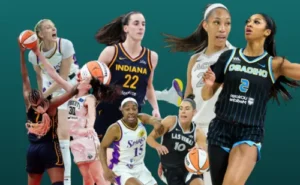
Also Read: Financial Literacy: The Quiet Revolution Women Are Leading
Current Popularity
More women than ever are playing sports today.
Professional Leagues
- The Women’s National Basketball Association (WNBA) and the National Women’s Soccer League (NWSL) are two professional leagues that show how successful women have been in professional sports.
- Serena Williams and Simone Biles are two of the most famous athletes in the world.
Sponsorship and Prize Money
- More than 22% more women athletes are getting sponsorship deals each year, and some sports, like tennis, now give men and women the same amount of prize money.
Ongoing Challenges
But the problems that women face in professional sports history continue to exist.
Pay Disparities
- Women athletes often earn less pay than men, receive less media coverage, and have fewer sponsorship opportunities.
- For instance, while the prize money for the women’s events at the 2023 World Squash Championship was greater than that for the men’s events, many sports still experience significant wage disparities.
Facility and Support Issues
- Women also have to deal with unequal facilities and support staff, and some still face stereotypes regarding their abilities.
Important Milestones Table
Year | Milestone | Description |
| Late 1800s | The formation of Athletic Clubs for Women in Sports started to form clubs for sports like tennis and croquet. | |
1892 | Basketball at Smith College | Basketball spread to other colleges. |
| 1896 | The First Intercollegiate Competition | Women’s basketball games between schools like Berkeley and Stanford University. |
1900 | Women in the Sports Olympics | Women participated in tennis, sailing, and croquet at the Paris Olympics. |
| 1920 | 19th Amendment | Gave the women the right to vote, boosting women’s sports rights. |
1943 | All-American Girls Professional Baseball League | First professional women’s sports league during WWII. |
| 1957 | DGWS Permits Allows Intercollegiate Sports | Changed rules to support women’s college sports. |
1969 | Women’s National Championships for Women | Included sports like gymnastics and track and field. |
| 1971 | AIAW Formed Founded | Focused on women’s college sports, growing to over 800 schools. |
1972 | Title IX Passed | Required equal opportunities for women in school sports. |
Conclusion
The history of women in professional athletics is a story of breaking down gender barriers and doing what people thought they couldn’t do. Women in sports have fought for their place since the beginning, from small, informal clubs to the Olympics and professional leagues around the world. Trailblazers like pioneers like Babe Didrikson and Billie Jean King showed fought for the world what women can do, proving women’s potential in sports. They proved their contributions to women’s sports. Title IX revolutionized women’s sports participation, but challenges persisted. Despite these, female athletes are carrying on this legacy by fighting for their fair pay, more opportunities, and a world where everyone can play.
Also Read: Let’s Talk: Why Women’s Podcasts Hit Different?
Frequently Asked Questions
1. When Did Women First Compete in the Olympics?
At the Paris Games in 1900, women first competed in the Olympics in sports like tennis, sailing, and croquet.
2. What Is Title IX, and How Did It Change Women’s Sports?
Title IX is a law in the United States that makes it illegal to discriminate against women in schools and colleges that get federal money. It was passed in 1972. It made a big difference in how many women could play sports professionally by ensuring equal opportunities, funding, and resources.
3. Who Was the First Woman to Win an Olympic Gold Medal?
Charlotte Cooper, a female tennis player from Britain, won the inaugural individual Olympic gold medal in 1900. This was a significant milestone for women in professional sports. In the same year, Helene de Pourtales of Switzerland won a gold medal in a sailing competition.
4. How Has the Difference in Pay Gap Between Male and Female Athletes Changed Over Time?
In some sports, like tennis, the pay gap has gotten smaller. For example, Grand Slams now offer equal prize money. However, in many sports, women earn less than men earn, and sponsorship deals are typically smaller. Although progress is being made, gaps persist, reflecting ongoing issues for women in professional sports history.
5. What Are Some of the Current Issues Facing Women in Professional Sports?
Women in sports like lower pay, less media coverage, fewer sponsorships, and unequal facilities. There are still stereotypes about what women can do and biases in society, but advocacy is helping to change these issues. This is part of the ongoing effort to eliminate gender barriers in professional sports.

